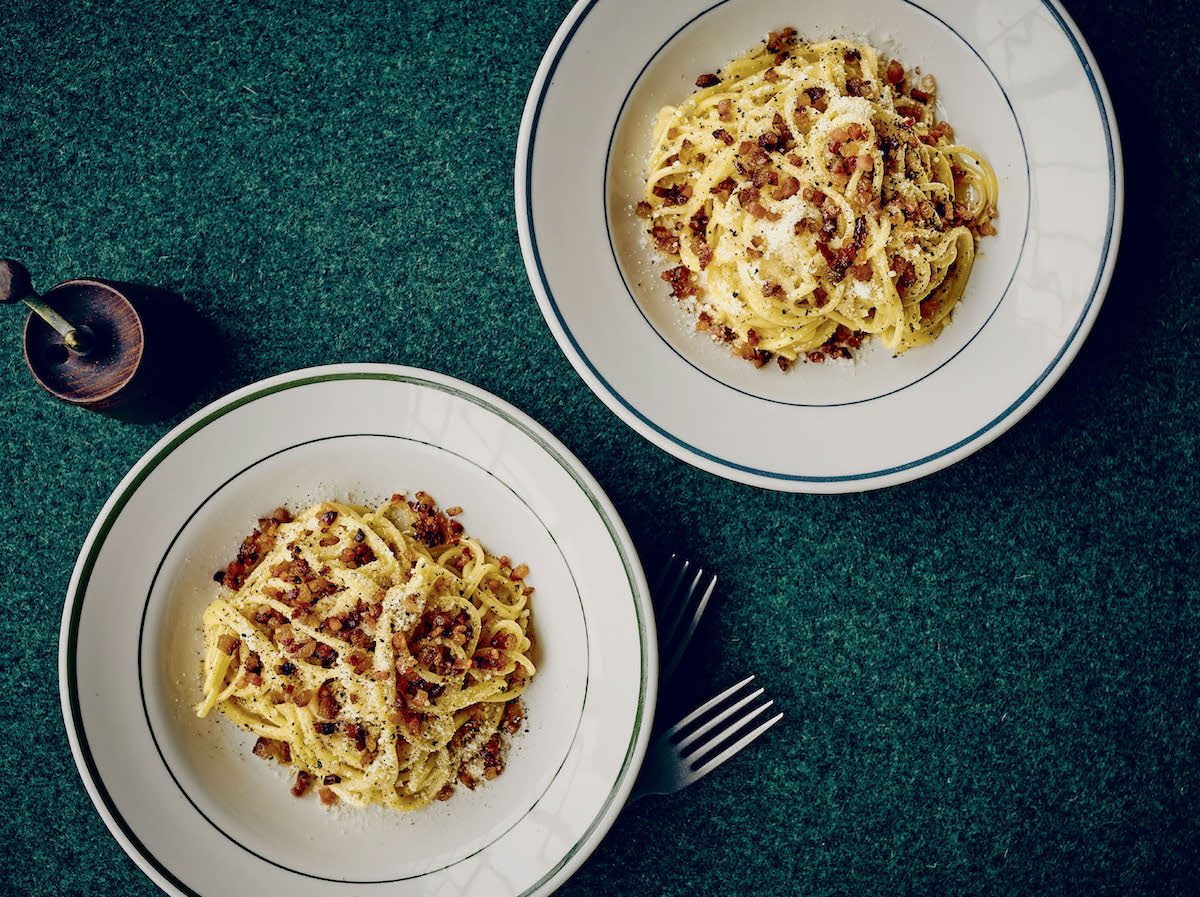
Missy Robbins' Spaghetti alla Carbonara Recipe
|
|
Time to read 3 min
|
|
Time to read 3 min
This recipe is an excerpt from the cookbook Pasta: The Spirit and Craft of Italy’s Greatest Food, written by Missy Robbins & Talia Baiocchi.
I learned to make carbonara at my first job in Emilia-Romagna. In retrospect, that makes no sense. Even though there is some debate around its origin, there is no debate that today carbonara is a dish of Lazio through and through—Rome to the bone, as one might say. It’s also true that there are many different ways to make it: Pancetta or guanciale? Spaghetti or rigatoni? Whole eggs or egg yolks? Parmigiano-reggiano, pecorino romano, or both?
Regardless of how you answer, there is no arguing that carbonara satisfies in its own, almost mystical way. It does not just have fans, it has disciples. It also happens to be a great beginner’s pasta in that it’s easy to make on the fly with ingredients you’re likely to have on hand (though nothing beats guanciale, you can sub in pancetta in a pinch), and even if it does curdle, let’s face it, it’s still delicious.
But let’s not curdle it. That’s the most common carbonara mistake. It is easily avoided, however, by what I call the bowl method (not to be confused with the double-boiler method), in which you temper a paste of the cheese and egg yolks—and I use only yolks—with warm guanciale fat in the mixing bowl. Loosening the mixture with pasta cooking water then turns that paste into sauce. After cooking, the pasta goes right into that bowl and gets gently tossed to marry. For extra dimension, I recommend using both pecorino romano (for bite and salinity) and parmigiano-reggiano (for richness and nuttiness).
Finally, don’t skimp on the black pepper—add a hefty amount, and then add some more.

15 minutes
10 minutes
4-6
1 (170g / 6 oz) piece guanciale, finely diced*
180g / 10 egg yolks
68g / ¾ cup finely grated parmigiano-reggiano
68g / ¾ cup finely grated pecorino romano, plus 15g / 2½ Tbsp for garnish
Black pepper, q.b.
624g / 1 lb 6 oz spaghetti (Missy recommends fresh, but you can also use dry)
*Nota bene : If using pancetta in place of guanciale, make sure to look for a piece that has plenty of fat.
Bring a large pot of water to a boil over high heat. Salt the water. Use slightly less than you might for other pastas, as the cheese and pork add quite a bit of salinity to the dish.
Place a large sauté pan over low heat. Add the guanciale and cook slowly until the fat has rendered and the meat parts start to get crispy, 5 to 7 minutes. Line a plate with paper towels. Using a slotted spoon, transfer the crisped guanciale to the paper towels to drain. Reserve 55g / ¼ cup of the rendered fat.
Add the egg yolks to a large bowl. Use a spoon or spatula to stir them into a smooth liquid. Do not whip them. Add the parmigiano and 68g / ¾ cup of the pecorino and stir to make a paste. Slowly stir in the reserved rendered fat. Add a hefty amount (about 40 grinds) of pepper and half of the reserved guanciale. Stir to combine.
Add the spaghetti to the water and cook for 5 to 8 minutes, until al dente.
Add 2 ladles (115g / ½ cup) pasta cooking water to the bowl in a slow, steady stream while stirring. This will further temper the eggs so they don’t curdle and will also loosen the mixture to form your sauce.
Using tongs or a pasta basket, remove the spaghetti from the pot and transfer to the bowl. Quickly but gently toss the pasta and cheese–egg yolk paste. As the sauce tightens, continue to add pasta cooking water a splash at a time until you have a smooth, silky sauce coating the pasta.
Divide into bowls and garnish with the remaining 15g / 2½ tbsp pecorino, the reserved guanciale, and with pepper, to taste.
This recipe is published with permission from Pasta: The Spirit and Craft of Italy’s Greatest Food by Missy Robbins and Talia Baiocchi, copyright © 2021. Published by Ten Speed Press, an imprint of Penguin Random House. Food photographs copyright © 2021 by Kelly Puleio. Location photographs copyright © 2021 Stephan Alessi. Illustrations copyright © 2021 Nick Hensley.